"POTSDAMER PLATZ - BERLIN"
Criação, produção e interpretação:
Joao Butoh.
Duração: 50 minutos
Este espetáculo é resultante de informações históricas
colhidas durante Residência Coreográfica
realizada na Alemanha entre 1996 e 1998.
Potsdamer Platz
O maior canteiro de obras da Europa encontra-se presentemente no centro de Berlin. Seu núcleo é configurado pelo ambiente geral da Potsdamer Platz - uma praça com aspecto de entroncamento, na convergência de várias ruas. Num concurso urbanístico aberto de 1910 a 1911, ela foi apresentada como ponto de medição central dos anéis rodoviários e ferroviários de Berlin, muito embora seu posicionamento topográfico não coincidisse, de forma alguma, com o centro da cidade. Mas, como ponto de entroncamento de grande movimento, ela se tornou, desde o início do Século XX, uma espécie de centro funcional de Berlin. Era para ali que a massa popular antigamente convergia ao circular de carro, ônibus, trem ou bonde pela cidade. Em 1924, aquela praça de maior trânsito de toda a Alemanha foi a primeira a receber uma torre de controle de trânsito, dotada do primeiro sistema de sinalização instalado no país. e a praça era, simultaneamente, uma expressão viva do modernismo berlinense.
Depois das sérias destruições sofridas durante a guerra e nos anos de divisão da Alemanha, aquele ex-centro urbano tornou-se árido. Uma área devastada e cortada por um muro. Mas, de conformidade com sua tradicional importância, foi ali que se deu um acontecimento de cunho simbólico após a reviravolta alemã de 1989: o da primeira brecha aberta no muro que então dividia a cidade.
“POTSDAMER PLATZ” fala da Alemanha do período entre guerras até a queda do muro. Fala da crueldade de um país dividido, sitiado, de contrastes sociais; e também das dores de seu povo, dos campos de extermínio. A Alemanha pobre e a Alemanha rica. O poder e a miséria. A alegria e a tristeza. A liberdade e o confinamento. A vida e a morte. Dualidades presentes não só na história do povo alemão, como também na história da humanidade.
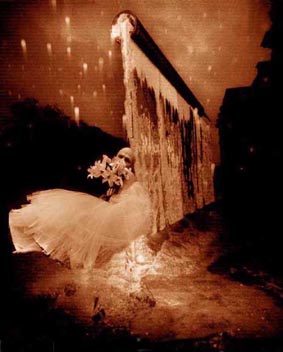
agradecimentos:
JOHN ULBRICHT - U.S. ARMY - DACHAU
ANNE FRANK HUIS - AMSTERDAM
ZEUGHAUS - DEUTSCHES HISTORISCHES MUSEUM - BERLIN
EHEMALIGE KÖNIGLICHE BIBLIOTHEK - BERLIN
MODESAMMLUNG - VIENNA
BÁRBARA KESSLER - BERLIN
GÜNTHER GRAML - MUNIQUE
XAVIER VAZQUEZ - BRUXELLES
MÁRIO / ROLAND ZIMMERMANN - VIENNA
CIA. CYLENE PENHAVEL - SÃO PAULO
MARTA OLIVEIRA CIA. DE DANÇA - CAMPOS DOS GOYTACAZES - RJ
GG VÍDEO - SÃO PAULO
INSTITUTO GOETHE - SÃO PAULO
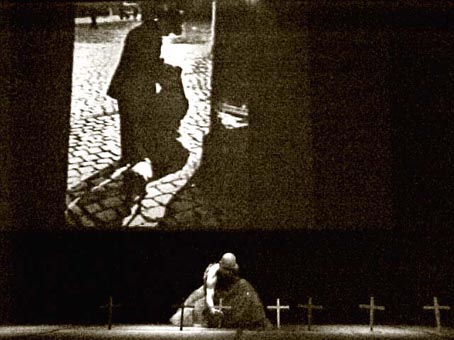
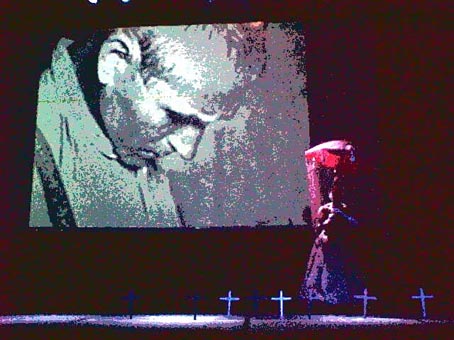
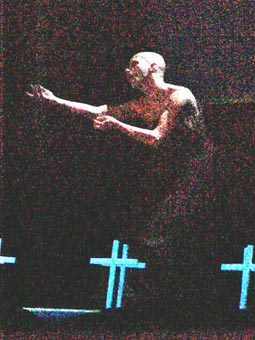
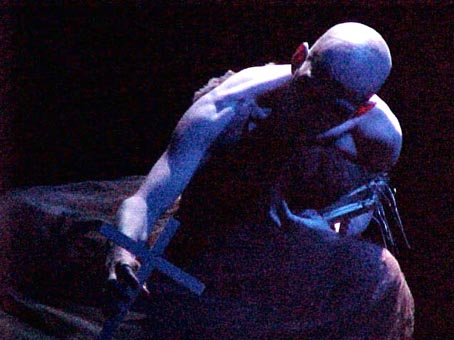
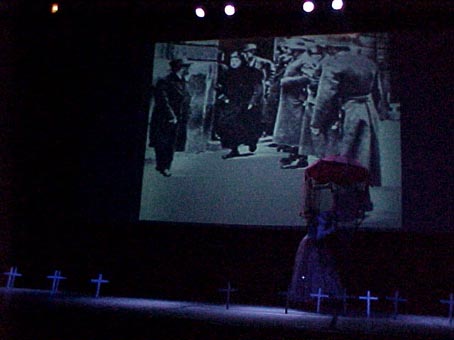
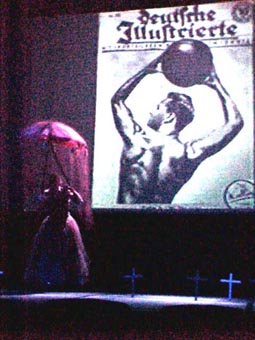
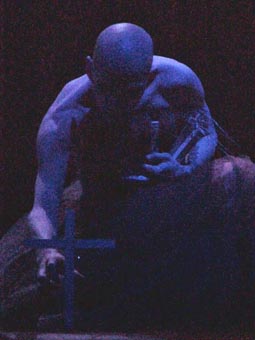
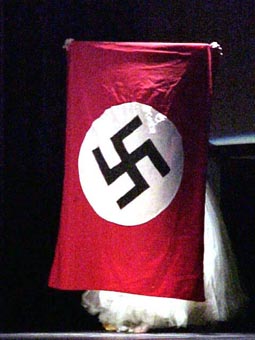
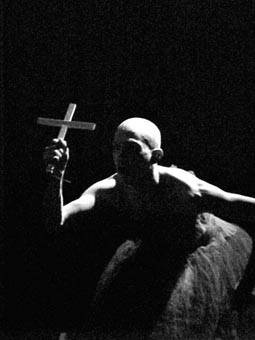
Fotos de Cacá Soares.

Creation, production and interpretation:
JOAO BUTOH.
Resulting show of the Historical and Choreographic Residence accomplished in Germany in 1996 and 1998.
Duration:
50 minutes
Music: B. Brecht, Paul Celan, Holländer, Kurt Weill, Hanns Eisler, Heiner Goebbels, Fernay.
Incidental sound-track: Picked up during the period of Residence, in several cities of 07 different countries, through a Sony CompactMD.
Potsdamer Platz
The largest construction site of Europe is at present in the center of Berlin. The main center is configured by Potsdamer Platz's general atmosphere - a square with crossing point aspect, in the convergence of several streets.
In a urban contest opened from 1910 to 1911, that was introduced about point of central measurement of the road and rail rings of Berlin, even though the topographical positioning didn't coincide, with the downtown. But, about point of crossing point of great movement, it became, since the beginning of the Century XX, a type of functional center of Berlin. It was for there that the popular mass formerly converged to the car, bus, train or trolley traffic for the city. In 1924, that square of larger traffic of the whole Germany was the first to receive a control tower of traffic, endowed with the first signalization system installed at the country and the square was, simultaneously, an alive expression of the modernism from Berlin.
“POTSDAMER PLATZ” It tells about Germany in the period among wars to the fall of the wall. It tells about the cruelty of a divided country, surrounded, of social contrasts; and also of the pains of the people and extermination fields. Poor Germany and rich Germany. The power and the poverty. The happiness and the sadness. The freedom and the confinement. The life and the death. Present dualities not only in the history of the German people, as well as in the humanity's history.
Thanks to:
JOHN ULBRICHT - U.S. ARMY - DACHAU
ANNE FRANK HUIS - AMSTERDAM
ZEUGHAUS - DEUTSCHES HISTORISCHES MUSEUM - BERLIN
EHEMALIGE KÖNIGLICHE BIBLIOTHEK - BERLIN
MODESAMMLUNG - VIENNA
BÁRBARA KESSLER - BERLIN
GÜNTHER GRAML - MUNIQUE
XAVIER VAZQUEZ - BRUXELLES
MÁRIO / ROLAND ZIMMERMANN - VIENNA
CYLENE PENHAVEL DANCE CO - SÃO PAULO
MARTA OLIVEIRA DANCE CO - CAMPOS DOS GOYTACAZES - RJ
GG VÍDEO - SÃO PAULO
GOETHE INSTITUTE - SÃO PAULO
